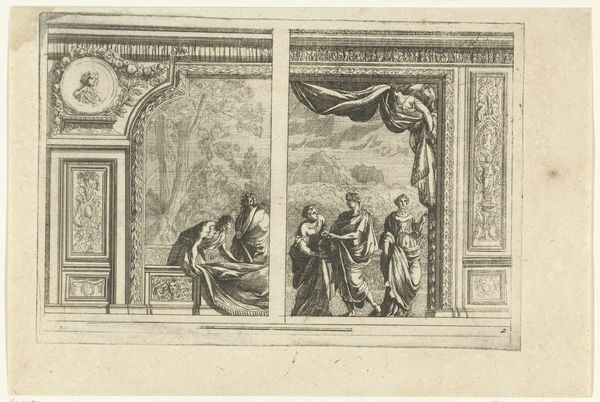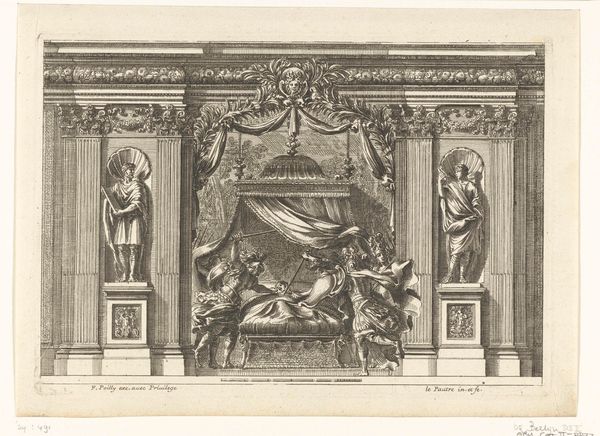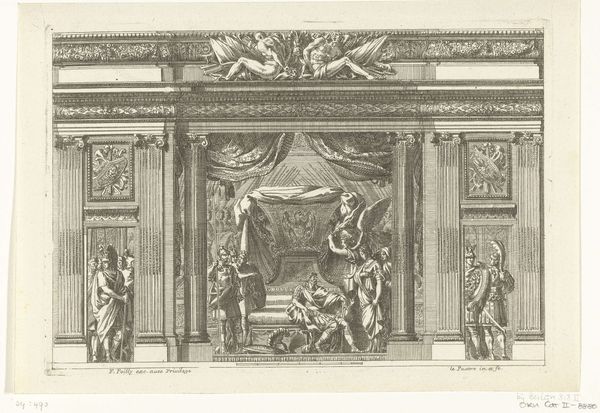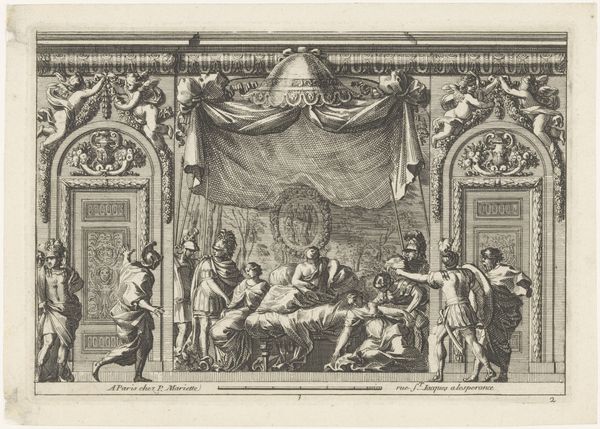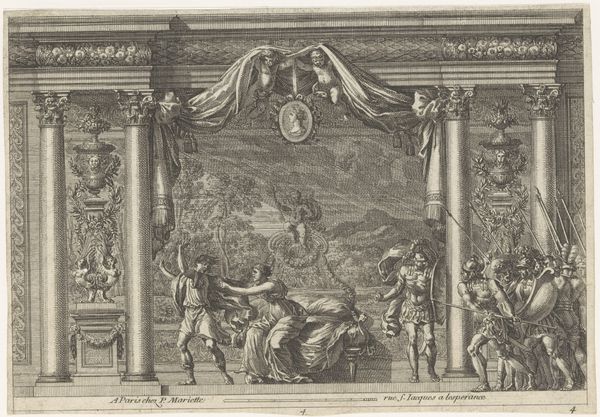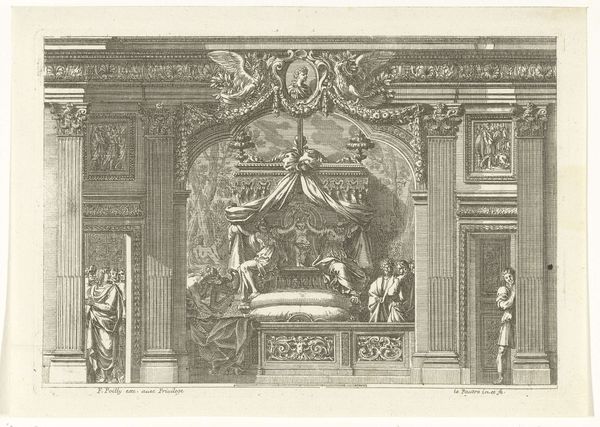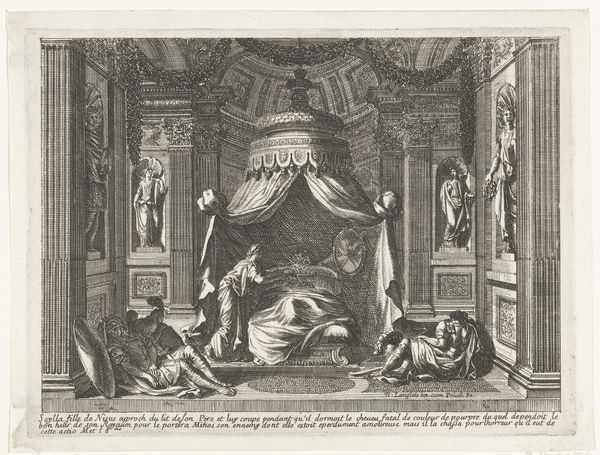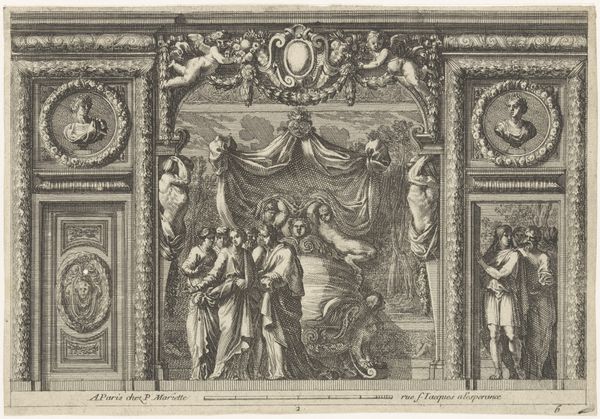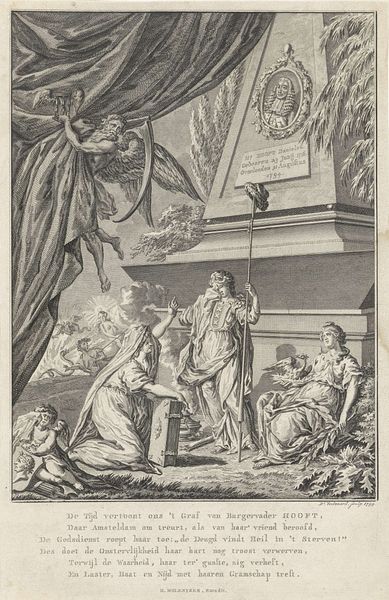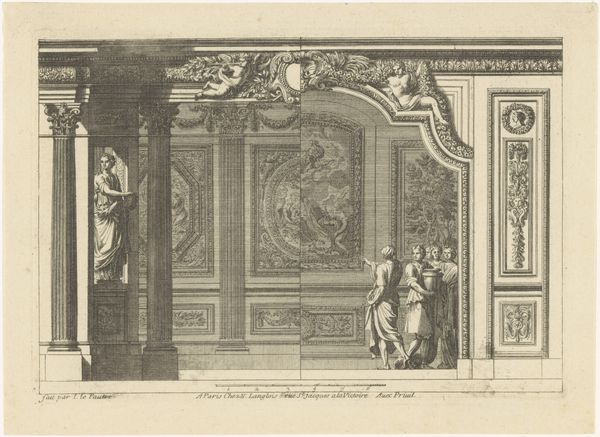
print, engraving
#
baroque
# print
#
figuration
#
line
#
history-painting
#
academic-art
#
engraving
Dimensions: height 149 mm, width 230 mm
Copyright: Rijks Museum: Open Domain
Editor: So, this is Jean Le Pautre's "Alkoof met variant voor rechterhelft," created sometime before 1683. It's an engraving. I'm struck by how theatrical it feels, like a scene ripped straight from a play, full of dramatic gestures and intense emotion. What do you see in this piece? Curator: I see a stage, literally and figuratively. Le Pautre, working within the Baroque style, presents us with a carefully constructed tableau. But beyond the visual spectacle, I am interested in what narrative he’s conveying and how it intersects with power structures of his time. Consider the "privilegio Regis" inscribed—what stories were considered worthy of royal sanction and, conversely, whose voices are conspicuously absent? Editor: That's interesting. So, it’s not just a pretty picture, but a carefully constructed statement? I was drawn to the emotion, but missed the political layer. Curator: Exactly! Think about the composition. The alcove, a space of privacy and power, is rendered public. The bodies within – who do they represent? Are they active agents or merely playing roles dictated by societal expectations? The print allows this scene to be distributed and discussed amongst broader audiences, and therefore, possibly challenged. Does it confirm existing power dynamics, or subvert them? Editor: I hadn't thought about the role of printmaking itself in spreading these ideas. It makes me consider who had access to these images, and what the intention behind disseminating them was. Curator: Precisely. By engaging with historical context and social dynamics, we move beyond mere aesthetic appreciation and engage with the print's active role in shaping its culture. Editor: I’m definitely going to look at Baroque art differently now. It is really important to see how even these decorative, historical-looking art works are shaped by, and can also shape, their social context. Curator: Absolutely! Questioning the power dynamics embedded within art opens new pathways to interpreting their significance.
Comments
No comments
Be the first to comment and join the conversation on the ultimate creative platform.
